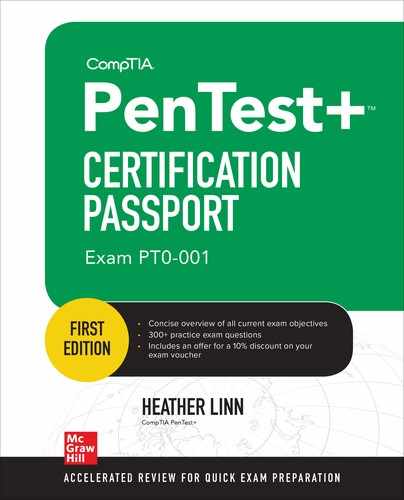Book Description
This effective self-study guide serves as an accelerated review of all exam objectives for the CompTIA PenTest+ certification exam
This concise, quick-review test preparation guide offers 100% coverage of all exam objectives for the new CompTIA PenTest+ exam. Designed as an accelerated review of all the key information covered on the exam, the Passport’s established pedagogy enables you to tailor a course for study and drill down into the exam objectives. Special elements highlight actual exam topics and point you to additional resources for further information.
Written by an IT security expert and experienced author, CompTIA PenTest+ Certification Passport (Exam PT0-001) focuses on exactly what you need to know to pass the exam. The book features end of chapter review sections that provide bulleted summations organized by exam objective. Accurate practice exam questions with in-depth answer explanations aid in retention, reinforce what you have learned, and show how this information directly relates to the exam.
• Online content includes access to the TotalTester online test engine with 200 multiple-choice practice questions and additional performance-based questions
• Follows the newly-refreshed Certification Passport series developed by training guru Mike Meyers
• Includes a 10% off exam voucher coupon, a $35 value
